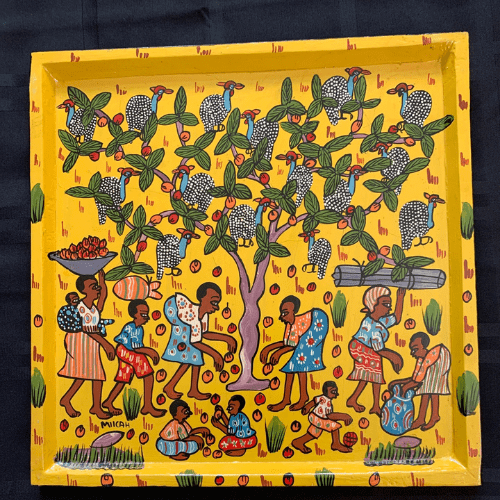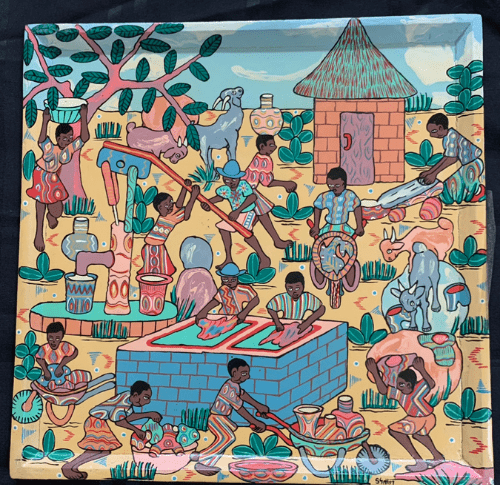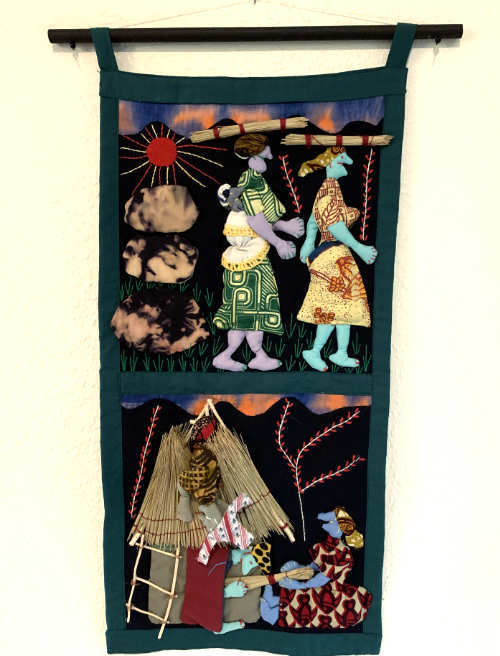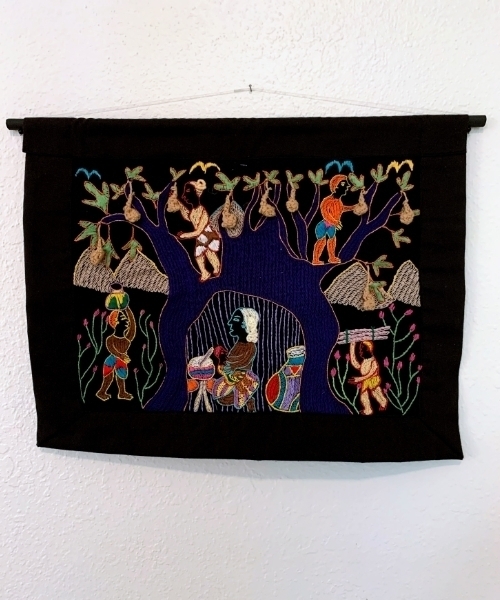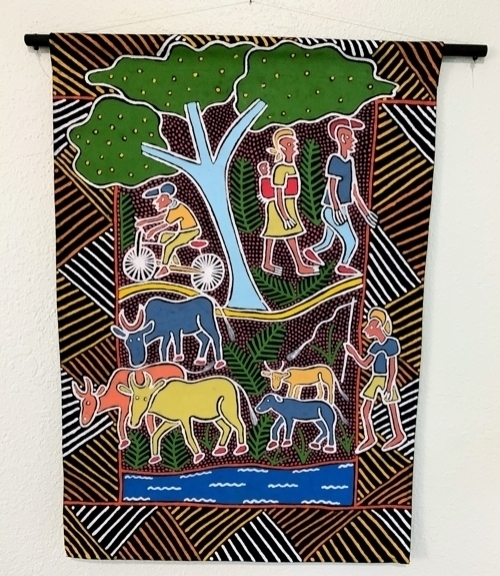Painted Tray – ZCC Defe Dopota
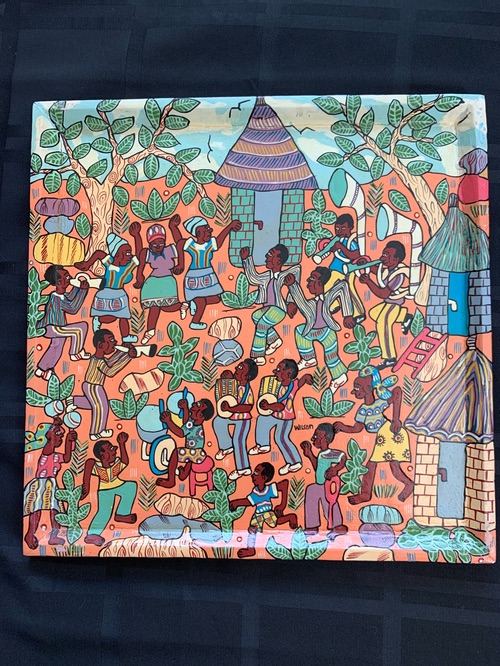
Title: ZCC Defe Dopota
Artist: Shelton Shavi
Size: approx 12.5″w x 12.5″h
Zimbabwe Weya Art hand painted wooden tray, folk art
Cost: $60 – includes free shipping in the continental U.S.
The piece includes the hand written story by the artist and her bio on the back.
The Story:
One of the common church groups in Zimbabwe which is called Zion Christian Church (ZCC). Defe Dopota is performing.
1. They are at their leader’s place. Women are dancing same style. They are dressed smartly. Men are responding by stylish dancing as well.
2. Some are adding music with pianos, drums and Hosho.
Artist Bio:
Shelton was born in Epworth, outside of Harare, in 1982, one of seven children. He went through the equivalent of 9th grade, stopping because the family had no money to pay school fees. He came to Weya in 2000 because life was difficult in the city. He stays with his aunt and helps her with agriculture, but it is not fulfilling work and provides him with no money. He began to study painting with his half-sister, artist Alletah Chehore, in 2002. “Art was my best subject when I was in school and I want to make some money.”


